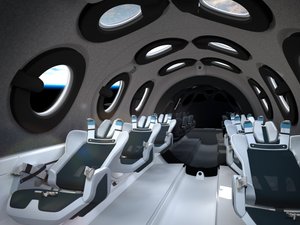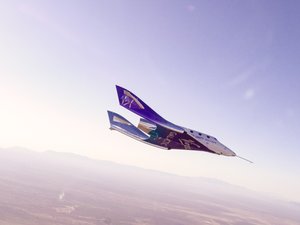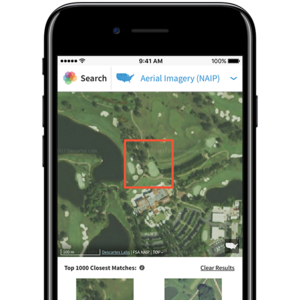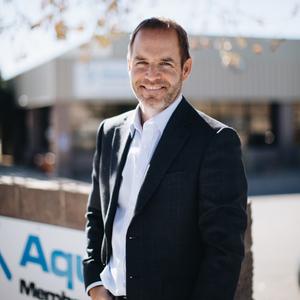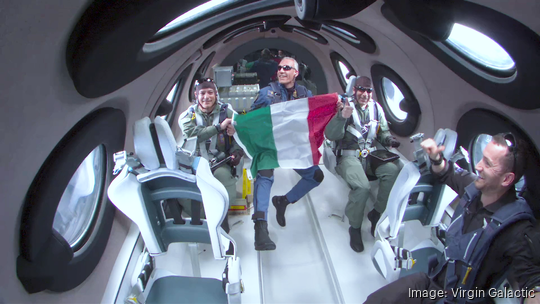
— This story has been updated with comments from crew members from a press conference that followed the mission, as well as from Virgin Galactic's CEO and the executive director of Spaceport America.
Virgin Galactic (NYSE: SPCE) completed its first commercial flight Thursday morning when a crew of four astronauts inside the space tourism company's spaceship touched down at New Mexico's Spaceport America just before 9:45 a.m.
VSS Unity, the company's spaceship with two Italian Air Force officers, one Italian researcher and a Virgin Galactic astronaut instructor on board, took off from the Spaceport at 8:30 a.m. Thursday. The company's "mothership," VMS Eve, carried Unity up to around 44,500 feet above southern New Mexico before releasing the spaceship to fire into the upper reaches of the atmosphere just after 9:30 a.m.
Unity returned to the Spaceport about 15 minutes later, just before 9:45 a.m. The spaceship reached a peak altitude of 52.9 miles and a top speed of Mach 2.88, or approximately 2,200 miles per hour.
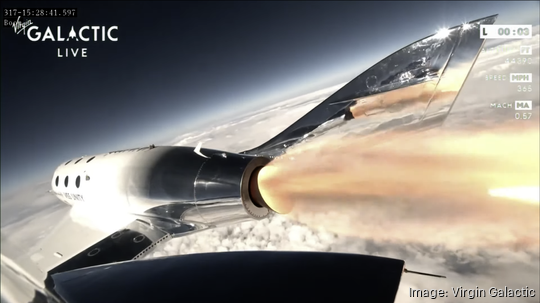
It's the first commercial flight run by Virgin Galactic since the company has been beset by delays in getting its commercial service — Virgin Galactic's long-time objective — up and running. The flight, dubbed "Galactic 01," was a research mission with an Italian crew designed to run different experiments in microgravity conditions.
The company live streamed the flight on its website, and a gaggle of media from outlets in New Mexico and across the country and world were on hand at Spaceport America's "Gateway to Space" building, which is leased to Virgin Galactic, to observe the flight. A press conference followed the mission.
"The space flight was much better than expected," Italian Air Force Col. Walter Villadei, the mission commander on board VSS Unity, said during the press conference. "It was a beautiful ride."
The mission, which took just over an hour between launching at 8:30 a.m. and landing at 9:42 a.m., was originally set to take closer to 90 minutes. Villadei said the crew's time in microgravity "went very fast" but that he and fellow crewmembers Italian Air Force Lt. Col. Angelo Landolfi and Pantaleone Carlucci, an engineer with the National Research Council of Italy, were able to conduct "all the experiments that we were supposed to run."
"We also had the opportunity to look outside and really enjoy the beauty of the view outside," he added.
Alongside the four-person crew and two pilots, 13 research payloads were also on board VSS Unity as it reached microgravity. Those allowed the crew to conduct experiments on how different sorts of materials react in microgravity conditions.
"This successful mission gives us just a preview of what discoveries may result from reliable access to space to further scientific knowledge," Sirisha Bandla, vice president of government affairs and research operations for Virgin Galactic, said in a statement following the flight.
Although Virgin Galactic is headquartered in Mojave, California, the space tourism company runs its flights out of Spaceport America, an 18,000-acre commercial spaceport about half an hour outside Truth or Consequences. It's the anchor tenant there and operates out of the "Gateway to Space" building, which cost north of $200 million to build in the early 2010s alongside the Spaceport Operations Center.
"Perhaps the technology has been a little slow to get up and running, but this success shows that we are in the right place at the right time," Scott McLaughlin, the Spaceport's executive director, told Business First. "We're going to keep moving forward. This shows that the Spaceport should be a major player over the next decade."
Virgin Galactic plans to fly private astronauts into space in August on the company's second commercial mission, called "Galactic 02." Customers pay $450,000 for seats on the company's spaceship, VSS Unity.
After that August mission, Virgin Galactic wants to run commercial flights on a monthly basis. Its next generation of spaceships, called the "Delta-class," is currently under development. Those could ramp up Virgin Galactic's flight cadence to multiple flights per month once operational, the company's CEO Michael Colglazier has said in previous earnings calls.
"This historic flight was our first commercial flight and our first dedicated commercial research mission — ushering in a new era of repeatable and reliable access to space for private passengers and researchers," Colglazier said in a statement. "'Galactic 02,' our first spaceflight with private astronauts, is planned for August and we expect VSS Unity to continue with monthly space missions while we simultaneously work to scale our future spaceship fleet for a global audience."
